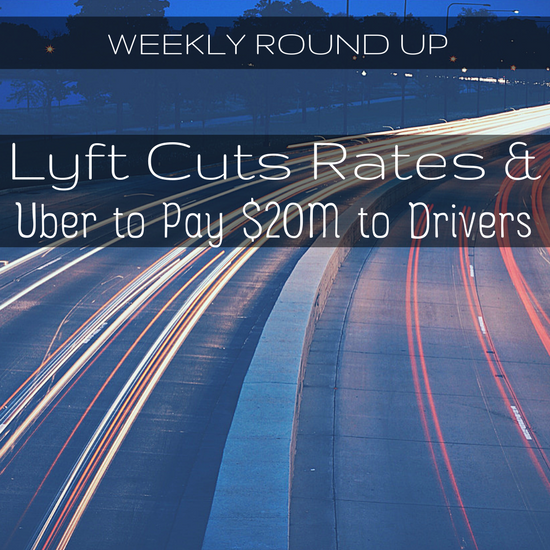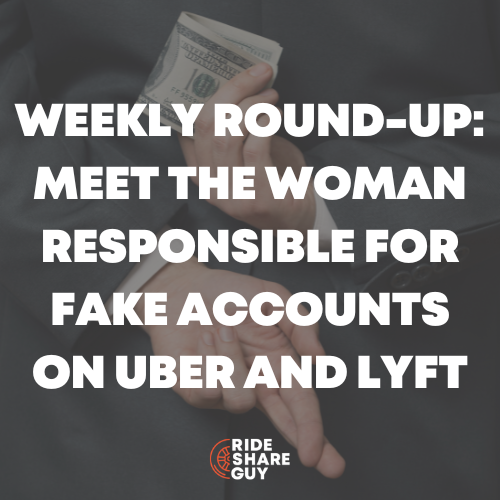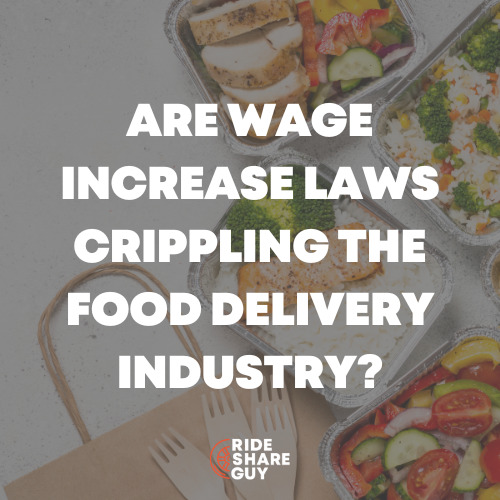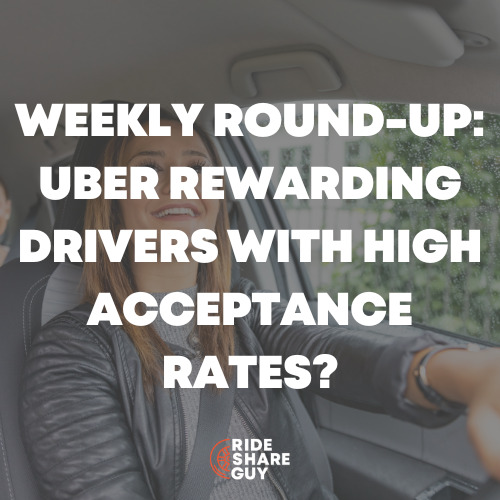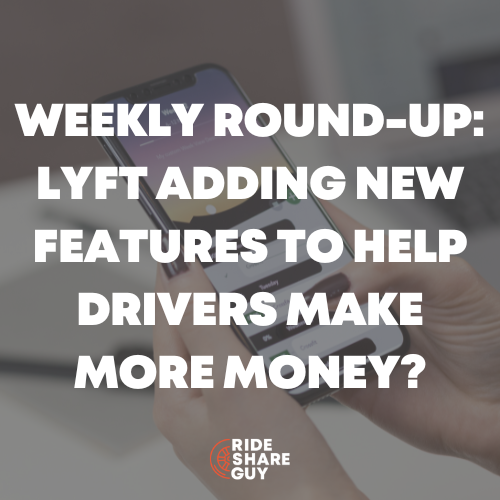Harry here. We’ve been waiting to see if Uber would cut fares this year and, to our surprise, they haven’t (yet). But yesterday, we found out that Lyft is actually cutting fares across the board in several cities. They’ve e-mailed drivers in affected cities and said it should only be a 1% cut, but in Orange County, for example, the per mile rate was cut from $1.15 to $0.90, which is a whole lot more than 1%.
I was pretty surprised by the cuts since in the past, when Lyft has cut rates, they’ve told drivers they were only doing it because the competition was also cutting rates. I’ve always been a fan/supporter of Lyft, but it seems like they are becoming more and more like Uber – what do you think?
In other news, today, senior RSG contributor John Ince takes a look at a $20 million lawsuit settlement between Uber and drivers, why Uber lost so much money in 2016 and more!
Uber to pay $20 million to settle claims it misled drivers about pay, financing [The Verge]
Sum and Substance: Uber will pay $20 million to settle a complaint by the Federal Trade Commission that it misled drivers about earnings and vehicle financing, the Wall Street Journal is reporting. The consumer protection agency alleged that Uber publicized misleading statements about the amount of money drivers could earn in 20 cities. For example, Uber said drivers could earn up to $90,000 a year in New York City and $74,000 in San Francisco.
As part of the settlement, Uber is not admitting any wrongdoing, but has agreed to pay $20 million. That sum will be distributed to drivers affected by the FTC, which did not respond to requests for comment. The FTC also claimed that Uber promised to provide drivers with the best-available financing options to own or lease a car, but that the rates drivers received were worse than those that could be obtained by consumers with similar credit scores.
In 2015, Uber ended its relationship with Banco Santander’s auto loan division, which later was accused of issuing subprime loans for vehicle financing. “We’re pleased to have reached an agreement with the FTC,” an Uber spokesperson said. “We’ve made many improvements to the driver experience over the last year and will continue to focus on ensuring that Uber is the best option for anyone looking to earn money on their own schedule.” As part of the settlement, Uber agreed to issue semi-regular compliance reports to the FTC, including marketing material and driver earning reports, according to court documents.
This isn’t the first time Uber has agreed to settle claims alleging it made misleading statements to drivers and customers. Last year, Uber agreed to settle two class-action lawsuits for $28.5 million that allege the ride-hail company improperly marketed its safety record to passengers by charging them a flat fee for “safe rides.” A few months later, Uber agreed to settle a class action lawsuit with drivers for $100 million, but that was later rejected by a judge as an insufficient amount. Last September, Uber won preliminary approval to settle a claim that it misled riders about a 20 percent gratuity for drivers.
My Take: A pattern seems to be developing here. Uber distorts the truth to achieve its desired end. Some party calls them on it with a lawsuit. Uber gets what it wants, and uses a small portion of its war chest to settle. A few lawyers get rich. Uber’s valuation increases, while its profit & loss (P & L) takes a hit.
In this case, those people suffering the consequences are the drivers who increasingly feel like a commodity that can be manipulated at will by Uber generated algorithms. Drivers have little recourse but to comply because Uber still has many more drivers than are required at any particular point in time.
The only potential problem with all this from Uber’s standpoint is the issue of driver churn – which regular readers of this blog will recognize as the the elephant standing in Uber’s living room. Uber burns through capital by offering driver sign-on bonuses, and within six months to a year, almost half of all drivers have taken the money and run. Uber execs have to realize this strategy has its limitations and that likely explains their big push to driverless cars. But the big question now is: are Uber execs overselling driverless cars, just like they oversold drivers on how much money they would make?
Why Uber lost $2.2 billion in 9 months [Vox.com]
Sum and Substance: It’s not unusual for a new company to lose money as it seeks market share and traction, but Uber is testing investors’ patience to a degree that’s unprecedented in the history of Silicon Valley. A December report from Bloomberg showed that the car-hailing app lost over $2.2 billion in the first nine months of 2016. That’s a staggering sum, and leaked documents suggest that Uber’s losses have grown in scale along with the company — rather than shrinking in a way that suggests a clear path to profitability.
Uber has raised $11 billion from venture capital investors to pay the bills so far, but if losses continue at their recent pace, even that massive war chest will only last for a few more years. Uber has been repeatedly touted as a new model for urban transportation. But if Uber never becomes profitable, that will suggest a different interpretation: that Uber hasn’t really transformed the transportation market at all. It’s just convinced some gullible investors to subsidize a lot of peoples’ taxi rides.
There are some smart arguments on both sides of this debate, but I suspect Uber really has figured out how to make the taxi market more efficient. However, this might not actually matter that much in the long run. The car industry is on the cusp of introducing self-driving cars. That has the potential to totally transform the industry, and Uber is gambling that its strong position in ride-hailing will give it an equally strong position in a self-driving car market that could be a lot more lucrative. … it’s important to remember that Uber’s results during its first eight years look a lot like those of Amazon during its early years.
Every year from its founding in 1994 until 2000, Amazon lost more money than the year before, leading skeptics to wonder if the company could ever turn a profit. But Amazon’s investors knew that Jeff Bezos wasn’t just lighting their money on fire. Amazon sold books differently than a conventional book store, using a website and warehouses instead of expensive retail locations staffed by hourly sales clerks. As a result, Amazon’s costs per book sold were always lower than those of Borders or Barnes and Noble. And thanks to economies of scale in software and warehousing, Amazon’s costs per book kept going down as the company grew.
Amazon’s was spending a lot of money on things like warehouses and new software that were going to take a few years to pay off. The company could have turned a profit earlier by spending less on these things, but Bezos convinced Wall Street that it was worth prioritizing growth over profits (indeed, when investors briefly soured on tech companies after the 2000 stock market crash, Amazon simply shifted to a lower gear and began showing modest profits). …
My Take: This is the most balanced analysis of Uber’s long term prospects I’ve come across in awhile. The author challenges several of the key points made in the Naked Capitalism series on Uber, but then he raises his own set of doubts about Uber’s ability to compete in driverless cars against the likes of Google, Ford and a whole host of companies that bring more to the table than Uber.
In the final analysis, Uber’s investors will find out whether they made a good bet when the passenger and driver subsidies stop, which has to happen at some point. Then we will find out the strength of the Uber brand. Will passengers jump to a rival that offers lower fares, more convenience or greater safety? Will drivers stick with Uber long enough to find out? These are the questions that determine whether investors have just wasted $11 billion.
Google takes another step towards launching its own self-driving Uber-killer with new patent [The Verge]
Sum and Substance: Google has a lot of self-driving cars that have driven a lot of miles, but so far, no commercial use for them. But that could change if the Silicon Valley giant pursues its rumored plans of developing an autonomous ride-sharing network to compete with Uber and Lyft.
Recently, Google filed a patent application that could be seen as the first shot across Uber’s bow. The application… is for efficiently determining pickup and destination locations for autonomous vehicles. Google says it wants to operate fully self-driving cars where passengers provide some initial input, such as a pick up or destination location, and the vehicle maneuvers itself to that location.
But not all locations are accessible or safe for autonomous vehicles. Self-driving cars may not be able to drive everywhere a human driven vehicle can, such as construction zones or lanes only for emergency vehicles. Google aims to address that challenge in its patent application. When provided with a location, Google says a centralized dispatching system would provide a set of suggested locations for safe pick-ups, waiting, or drop-offs. These suggested locations may include those provided by the user and convenient nearby locations. As such, the patented technology increases the “availability, safety, and usefulness of the services of autonomous vehicles,” Google’s application reads.
This isn’t the first patent filed by Google in relation to its self-driving efforts. Last year, the tech company was granted a patent for a unique solution to minimize injuries when a self-driving car strikes a pedestrian. The patent describes “an adhesive layer positioned on the front end of the vehicle” that pedestrians will simply stick to “in the event of a collision” — in other words, human flypaper. … Reportedly, Google plans to start small by deploying its multi-sized autonomous fleet in confined areas like college campuses, military bases, and corporate office parks.
My Take: From all indications, Waymo, aka Google, aka Alphabet, seem to be moving ahead into the ridehailing space deliberately and intelligently. Google has the resources to truly upend this industry. What might Google’s entry mean for drivers? It likely means that the future of driverless cars will come sooner rather than later – though I suspect it’s still off in the distance.
Google’s most recent patent indicates they understand the intricacies of ridehailing – especially how messy the pickups can be in urban environments. This has long been one of my main concerns about autonomous vehicles – actually finding and establishing physical connection with the passenger, in places where there is no legal place to stop. If Google can solve (and patent) their solution to this problem, I think they’ve taken a big step forward.
All these measured steps from Google should strike fear in Uber/Lyft executives and investors. Remember, in terms of balance sheet items, all that Uber and Lyft have gotten for their billions of investment is a pretty good app, some political victories and a widely recognized brand. Google already has all that and tons of cash to support their moves. Most passengers have no particular loyalty to Uber. If Google, Juno or someone else comes up with a better and cheaper solution, how long do you think passengers will stick with Uber or Lyft?
Lyft envisions a future where you either carpool or pay to drive [The Verge]
Sum and Substance: Logan Green and John Zimmer, the co-founders of Lyft, have an idea for ending traffic, but you may not like it. They published an op-ed today on Medium called “The End of Traffic,” in which they propose encouraging more people to carpool by charging a fee to those who don’t.
According to Green and Zimmer, the federal government should provide grants to cities to reclassify specific streets and highways as “smart lanes,” in which people with three or more occupants in their vehicle could drive for free, while everyone else would have to pay a toll. Those tolls could in turn be used to pay for the major infrastructure improvements that the nation sorely needs.
In other words, the Lyft co-founders propose combining two well-worn traffic reduction theories — HOV lanes and congestion pricing — into one in order to combat the growing scourge of gridlock. Most HOV lanes in the US allow drivers with just one passenger. And congestion pricing has proven to be a tricky to pull off for most municipalities.
In New York City back in 2007, for example, then-Mayor Michael Bloomberg proposed a plan that would charge drivers ($8 for cars, $21 for trucks) to enter the busiest part of Manhattan, only to have state lawmakers kill the plan at the last second.
In an interview, Green said that by making smart lanes free to those drivers with two or more passengers, he hopes to make the plan more politically feasible. Lyft has had discussions with policymakers about its ideas, but Green wouldn’t disclose with whom. “We have to draw line in the sand and declare our goal to end traffic,” he said.
Of course, Lyft has a vested interest in seeing policies put in place to promote carpooling. Both Uber and Lyft have their own carpooling products — UberPool and Lyft Line — that they’ve been aggressively marketing to riders over the last year. Lyft also has a more casual carpooling product that its testing in the Bay Area, in which non-professional drivers can get paid to pick up strangers on their way to work. (Green said that pilot was shut down after Lyft failed to find enough casual drivers to join.)
My Take: These manifestos by Lyft’s John Zimmer and Logan Green are thought provoking, but self serving and slightly delusional. Their proposal is to envision a future that conveniently happens to help advance Lyft’s business model.
Okay, maybe smart lanes make sense in specific situations, but their implementation on a large scale is logistically and politically a nightmare. His goal, to put an end to traffic, is laudable, but laughable. I mean, really? An end to traffic? One wonders sometimes what really is going on in the heads of these tech executives who are burning through billions of investors money, while writing op-ed pieces like this.
Readers, what do you think of this week’s round up? Where do you see the future of driverless cars going, and should people be charged if they have fewer than 2 passengers in their car?
-John @ RSG
Save
Save
